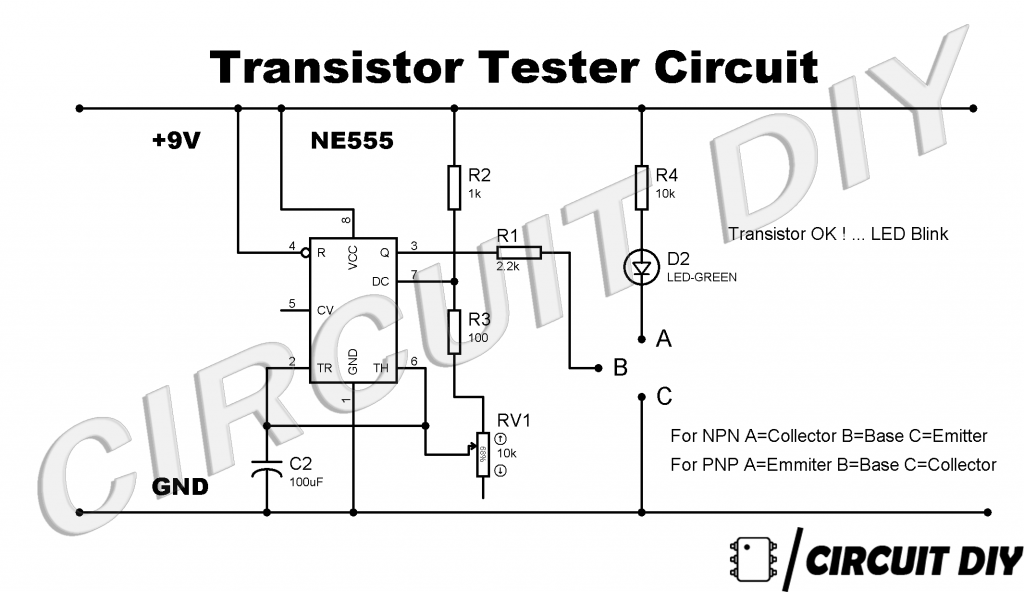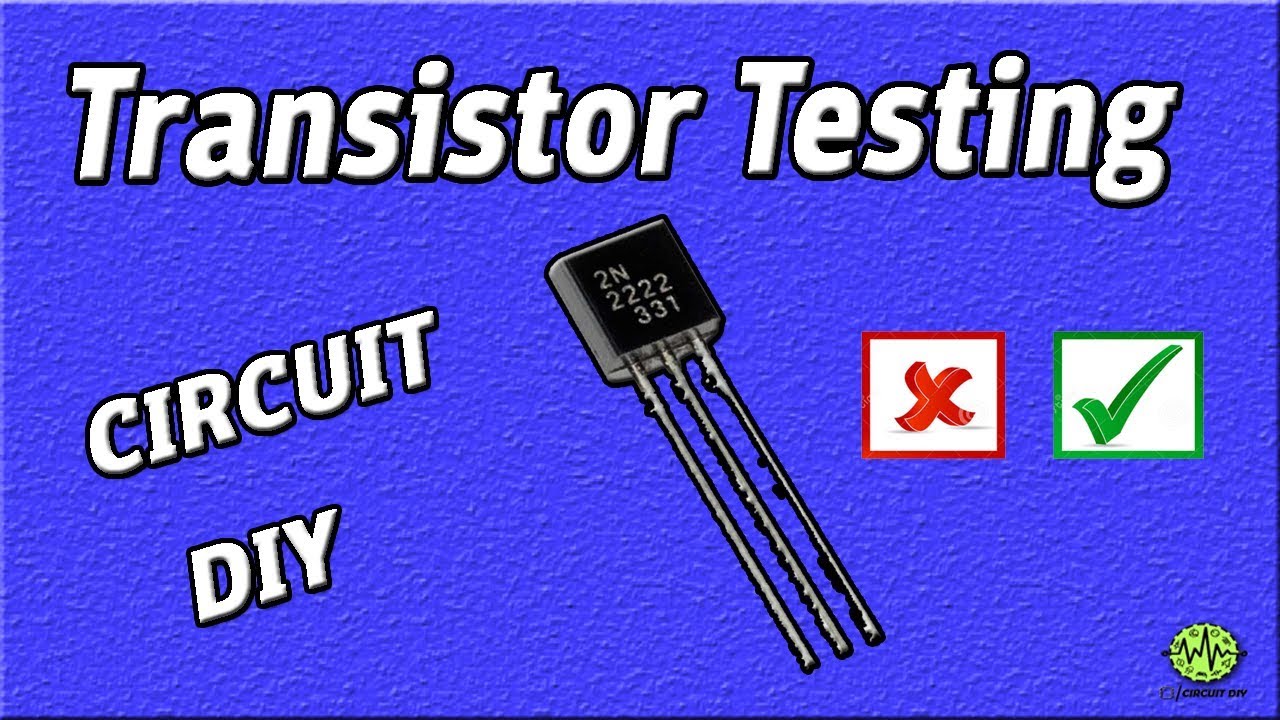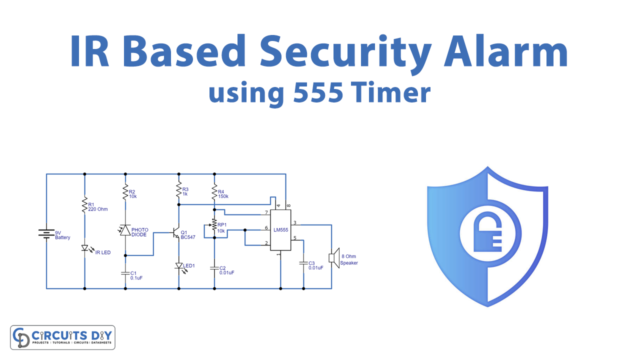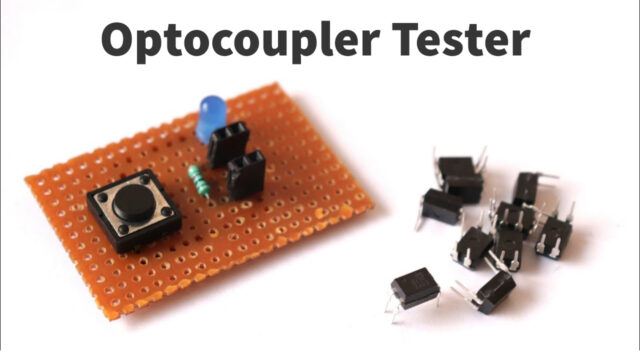A transistor is the main component of many electrical/electronics projects. Therefore the testing of transistor before implementing a circuit is extremely important to avoid any future inconvenience. Here in this tutorial, we will show you how you can make a simple Transistor Tester circuit at home using 555 Timer IC and some basic electronic components. In this circuit, we will use an LED to identify the condition of the transistor to be tested. By looking at the glowing pattern of LED we will identify whether the transistor is working perfectly or not.
Hardware Components
Following are the necessary hardware items for Transistor Tester Circuit:
| S.NO | Component | Value | Qty |
| 1. | Breadboard | – | 1 |
| 2. | Battery | 9v | 1 |
| 3. | Connecting Wires | – | 1 |
| 4. | IC | NE555 Timer | 1 |
| 5. | Variable Resistor | 10k | 1 |
| 6. | Resistors | 10K,2.2K,1k | 1,2,1 |
| 7. | LED | 5mm | 1 |
| 8. | Capacitor | 100uF | 1 |
Connections
- Place the 555 Timer IC on the breadboard and connect Pin 8 To VCC and Pin 1 to GND.
- Connect Pin 4 to VCC.
- Connect 1K Ohm Resistor between Pin 7 and VCC.
- Use a jumper wire to connect Pin 2 and Pin 6.
- Connect 100uF Capacitor between Pin 2 and GND.
- Connect 100 Ohm Resistor between Pin 7 and Variable Resistor.
- Use a jumper wire to connect Pin 6 to the Variable Resistor (Middle Pin).
- Connect 2.2K Ohm resistor from Pin 3 to the Base of transistor.
- Connect LED to the breadboard with a 10K Ohm Resistor connected in series with the LED.
Working Explanation
In this circuit, we will operate 555 timer in astable mode. The output at Pin 3 will be a square wave and the duty cycle of this wave depends on the value of resistor and capacitor. The output of 555 timer is connected to the Test point B, which will be the base of transistor. Test point A is connected to the positive supply through a resistor and LED. Test point C is connected to the Ground. Connections of the transistor at test point A & C depends upon the type of transistor (NPN or PNP) that we will test.
A transistor can work as a switch, so we will use this switching property of transistor to test it. When we will connect the transistor to this circuit, if the LED is continuously blinking, it means the transistor is working properly and we can also adjust the blinking speed of LED with the potentiometer. On the other hand, if the LED remains in continuous ON or OFF state, it shows that the transistor is not working and hence the frequency cannot be adjusted using the potentiometer.
Application
- We can use this circuit to test both PNP and NPN type of transistor.
Circuit Diagram















